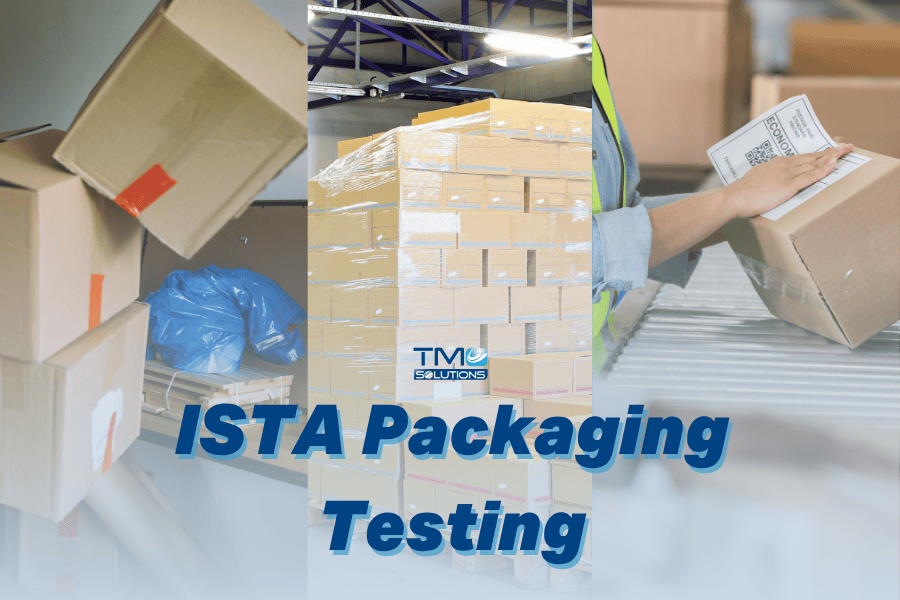Comprehensive Guide to ISTA Packaging Testing
Understanding ISTA Packaging Testing: Ensuring Product Safety During Transportation
In today’s global marketplace, products often traverse complex supply chains before reaching consumers. Ensuring that these products arrive undamaged is paramount for customer satisfaction and brand reputation. The International Safe Transit Association (ISTA) provides standardized testing protocols to evaluate packaging performance under simulated transport conditions. These tests help manufacturers design packaging that can withstand the rigors of shipping, reducing product damage and associated costs.
What is ISTA Packaging Testing?
ISTA packaging testing involves subjecting packaged products to controlled laboratory simulations that mimic real-world transportation hazards. These tests assess a package’s ability to protect its contents from shocks, vibrations, compression, and environmental factors encountered during shipping. By adhering to ISTA standards, companies can validate the durability and reliability of their packaging solutions.
Overview of ISTA Test Series
ISTA has developed a series of test procedures, each tailored to specific packaging and transportation scenarios:
Series 1: Non-Simulation Integrity Tests - Focuses on evaluating the strength and robustness of packaging without simulating transport environments. The ISTA Series 1 includes seven test procedures—1A, 1B, 1C, 1D, 1E, 1G, and 1H—each serving as an effective screening method during the initial stages of packaging design.
Series 2: Partial Simulation Tests - Combines basic integrity tests with partial simulations of transportation conditions. The Series 2 of ISTA comprises three test procedures—2A, 2B, and 2C—designed to evaluate packaging performance under specific transit conditions.
Series 3: General Simulation Tests - Provides a comprehensive simulation of transportation hazards, including vibrations, shocks, and environmental factors. Series 3 includes five standardized test procedures—3A, 3B, 3E, 3F, and 3H—alongside two additional testing projects, designated as Project 3K and Project 3L.
Series 4: Enhanced Simulation Tests - Customizable tests that closely replicate specific distribution environments.
Series 6: Member Performance Tests - ISTA 6-Series tests—such as 6-AMAZON.com, 6-SAMSCLUB, and 6-FEDEX—are developed either by ISTA members or in collaboration with ISTA to address the specific distribution conditions and requirements of major retailers and carriers. These member-specific performance tests are tailored to reflect the unique elements of the supply chains used by global leaders, making them unsuitable for broad industry standardization. Some of these protocols are entirely original, while others are adapted or modified from existing ISTA procedures or other recognized testing methods. They are particularly useful for assessing how well packaging systems perform against the specific challenges of these supply chains.
Series 7: Development Tests - Focuses on thermal performance and other specialized testing needs. The 7 Series includes two distinct test procedures: 7D and 7E.
Deep Dive: ISTA 3E – Unitized Loads for Truckload Shipment
ISTA 3E is a general simulation test designed for unitized loads of similar packaged products shipped via full truckload (FTL) delivery systems. This procedure evaluates the package’s ability to withstand transportation hazards such as:
• Atmospheric Conditioning: Simulates environmental conditions like temperature and humidity.
• Compression Testing: Assesses the package’s strength under stacking pressures.
• Random Vibration Testing: Replicates the vibrations experienced during transit.
• Shock Testing: Evaluates the package’s resilience to sudden impacts.
By conducting ISTA 3E testing, manufacturers can ensure that their packaging maintains product integrity throughout the distribution process.
How ISTA Testing Is Conducted: Process and Example
ISTA testing is carried out in controlled laboratory environments using calibrated equipment designed to replicate the environmental and physical hazards encountered during product distribution. The goal is to assess whether a product and its packaging can withstand the rigors of the supply chain—from warehouse to end customer—without damage or failure.
Each ISTA test procedure defines a sequence of test events, including drop impact, vibration, compression, and climatic exposure. The choice of procedure depends on factors such as package type, weight, mode of transportation, and final destination. For example, ISTA 3E, commonly used for unitized loads (like stacked boxes on a pallet), simulates the journey of a palletized shipment by truck. The test includes:
Vibration Testing: A hydraulic or electrodynamic shaker subjects the pallet to random vibration frequencies to simulate road transport. This phase tests for internal shifting, abrasion, and fatigue.
Drop Testing: The unit is dropped from predetermined heights on various orientations—edges, corners, and flat faces—to assess the structural resilience of both product and packaging.
Compression Testing: The unit is subjected to top-load pressure to replicate stacking scenarios in warehouses or shipping containers.
Climatic Conditioning (optional): If required by the test procedure, the sample is placed in a temperature and humidity chamber to simulate exposure to different climates during storage or transport.
Throughout testing, sensors and data acquisition systems monitor for deformation, breakage, leakage, or shifts in the product. After the test cycle, products are inspected visually and functionally to determine pass/fail results.
ISTA test results help companies identify design weaknesses, reduce damage-related returns, improve packaging efficiency, and ensure compliance with retail or carrier requirements—such as those imposed by Amazon (ISTA 6-Amazon), FedEx (6-FEDEX), or Walmart.
By validating packaging designs early in the product development cycle with ISTA protocols, manufacturers can avoid costly logistics problems, meet global distribution standards, and ultimately deliver better customer experiences.
The Importance of ISTA Vibration Testing
Vibration testing is a critical component of ISTA protocols, particularly in Series 1, 2, and 3. It simulates the continuous vibrations packages endure during transportation, which can lead to product damage or packaging failure. By identifying potential weaknesses through vibration testing, companies can enhance packaging designs to mitigate these risks.
Benefits of ISTA Packaging Testing
Implementing ISTA testing protocols offers numerous advantages:
• Product Safety: Ensures products are protected against transportation hazards.
• Cost Reduction: Minimizes returns, replacements, and warranty claims due to damaged goods.
• Regulatory Compliance: Meets industry and retailer requirements for packaging standards.
• Customer Satisfaction: Delivers products in optimal condition, enhancing brand reputation.
• Sustainability: Reduces waste by preventing product and packaging damage.
TMC Solutions: Your Partner in ISTA-Compliant Testing
At TMC Solutions, we are committed to helping manufacturers meet the stringent demands of ISTA packaging testing standards by providing world-class reliability testing equipment. Our comprehensive range of testing systems is designed to simulate real-world transportation hazards, ensuring product safety from factory to final delivery.
Our ISTA-aligned solutions include:
Hydraulic Shaker Systems – Simulate a broad spectrum of random and sinusoidal vibration profiles to assess how packaging and products withstand transportation by road, air, or sea.
Shock Testing Systems – Designed to evaluate resistance to sudden mechanical shocks and impacts, crucial for simulating rough handling scenarios in distribution chains.
Drop Test Systems (DS Series) – Reproduce vertical free-fall drops, edge/corner impacts, and flat drops in compliance with ISTA 1A, 2A, 3A and similar protocols to validate packaging integrity.
Incline Impact Test Systems – Ideal for testing large or heavy items, this system simulates horizontal shocks by sliding packages down a ramp into a stationary block, providing accurate data on real-world collision forces during transit.
Centrifugal Constant Acceleration Systems – Assess the structural integrity and durability of products exposed to sustained G-forces, ensuring long-term reliability.
Motion Simulation Platforms and Rate Tables – Offer precise control over motion sequences and rotational speeds, useful for evaluating packaging performance under dynamic transport conditions.
Whether you’re testing a single parcel or unitized loads, our systems provide repeatable, standards-compliant test conditions that help reduce damage-related returns, improve packaging efficiency, and ensure compliance with global retailers and carriers.
ISTA packaging testing is essential for companies aiming to ensure product safety during transportation. By adhering to ISTA standards and utilizing advanced testing equipment from TMC Solutions, manufacturers can validate their packaging designs, reduce costs, and enhance customer satisfaction.
Partner with TMC Solutions to build packaging solutions that meet ISTA 3E, Amazon SIOC, FedEx, and other supply chain testing requirements. Our expert team is ready to help you elevate your product protection strategy—contact us today to learn more.

